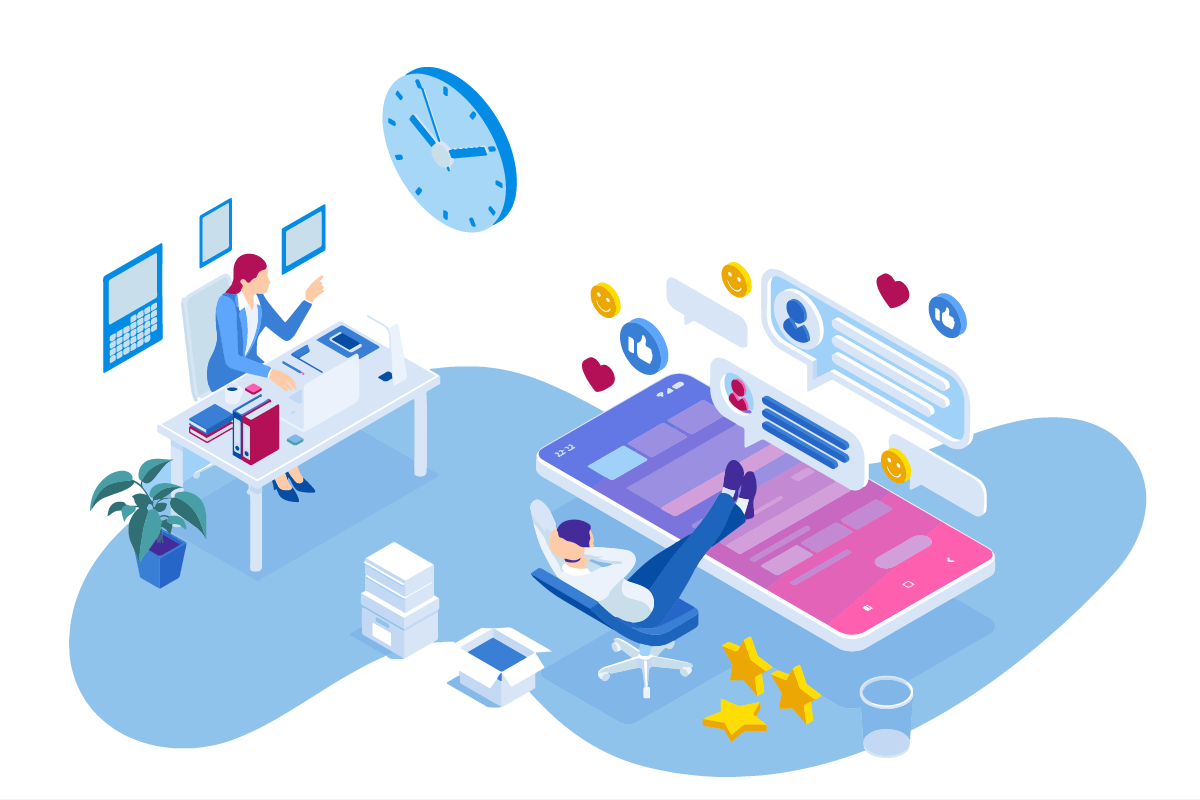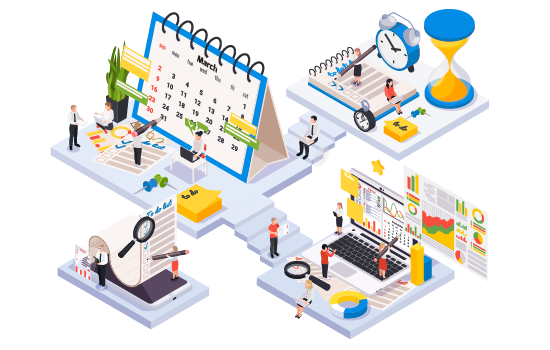Productivity diversions – getting distracted at work

In the modern day office, we’re surrounded by distractions and diversions. As time has passed, technology has become much more accessible and with it, came a new era of grown-up toys, playthings and interferences. In addition to this, the concept of an office job has spread to such a degree that is no longer reserved only for the well-connected. Nowadays, if you’re fresh out of college, or in some cases, even out of high school, you can experience office life, albeit not with your own private room, but more like a private cubicle or area within a shared space.
However, when it comes to distractions, an office’s size means nothing, as these come in many shapes or forms, from our personal cellphones, to tablets, iPads or even more ubiquitous, the Internet. Recently, the United Kingdom’s largest money saving brand, vouchercloud.com, polled around 2,000 full-time office workers over the age of 18, in the UK, to gauge their productivity and work habits.
The study contained 5 questions, as follows:
- Do you consider yourself to be productive throughout the entire working day?
Around 79% of respondents replied that they did not think they were productive, with only 21% considering themselves to be productive through the entire day.
- If you had to state a figure, how long do you think you spend productively working during work hours on a daily basis?
Answers to this question varied across the board, with some people suggesting they were productive 8/8 hours, others believed they were good to go for only half that time, while some thought of their productivity levels to only last for maybe an hour, at best. The interesting matter is that when aggregated and averaged out, the final result across workplaces was around the 2-hour and 53-minute mark of productivity. So for the average office worker in this study, their productivity level peaked at around 3 hours.
- Do you think that you could get through the working day, without partaking in any distractions?
65% of respondents noted that they couldn’t actually go through an entire working day without any pauses or diversions. What’s striking here is that this view is strengthened by another study on productivity, which found that in order for a worker to achieve as close to maximum productivity as possible, they should schedule their daily work tasks into 52/53 minute sessions, with a 17-minute break session in between each task.
Around half of these 65% stated that these distractions made their working days and oftentimes repeated tasks much easier to cope with.
- What are you guilty of spending time on, during the working day, rather than working productively?
Respondents were given a whole host of options to choose from and they were allowed to go with multiple options, if they applied. The most popular distractions, in order of percentage vote, were as follows: 47% - social media, 45% - news websites, 38% - chatting about work with colleagues, 31% - preparing hot drinks, 28% - smoke breaks, 27% - texting, 25% - enjoying snacks, 24% - preparing food at the office, 24% - calling friends/family, 19% - looking for a new job.
- How long do you believe you spend on each distraction, during the course of a working day?
In the same order as we listed them above, people believed that throughout a working day, they spent 44 minutes on social media, an hour and 5 minutes reading news, 40 minutes chatting with colleagues, 17 minutes making hot drinks, 23 minutes smoking, 14 minutes texting, 8 minutes eating snacks, 7 minutes making food at the office, 18 minutes talking to friends/family, 26 minutes searching for a new job.
Company born & bred productivity killers
While personal interferences account for a majority of the reason why people might not be achieving maximum productivity, these can be very-well enabled by certain business-related productivity killers.
Commuting
The U.S. Census Bureau found that in 2018, the average 1-way commute to work is around 27 minutes, which is about 6 minutes longer than it used to be in 1980. When you consider the fact that averaged out, you waste 30 minutes on the road – with some people doing commutes of even 1 to 2 hours back and forth, that seems like a big chunk of time wasted, which will definitely have an impact on your personal output each day.
Meetings, meetings, meetings!
According to an MIT Sloan Management Review study, your every day office worker spends 22 years, of their 45-year career, in meetings. Half of one’s professional career is spent in an office, doing nothing other than potential planning, strategizing and reviewing said plans & strategies. The same study found that on average, out of a 47-hour long work week, office workers spend around 22-23 hours in meetings.
Now, don’t take this the wrong way – some meetings are productive and actively lead to better output and outcomes. One could argue that many creative-type meetings, like those for research, marketing, advertising and publishing departments, are some of the most productive ones. However, as the economist Ludwig von Mises pointed out in his book, Bureaucracy, meetings are oftentimes employed as a busywork tool, to disguise the lack of work on the part of some within a company.
Emails for you, emails for me, emails for everyone
A Forbes piece of research, carried out to find new ways of boosting productivity, found that every day office workers average out about 2.5 hours composing, replying to or reading emails, many of which are not even relevant to their task or job, but they’re CC-ed in them nonetheless. If we take into account the aforementioned 45-year long career, that’s almost around 10 years, or a fourth of their career time, spent on emails.
Final thoughts
If you add up these 3 business-bred time sinks, you end up spending around half of your professional life on menial tasks or objectives. When you combine this with personal distractions, things start to look quite dicey. However, not everything is doom & gloom. If we consider business-bred interruptions to enable personal distractions, these usually have a quick an easy fix.
For commuting, there is always work-from-home. For meetings, you can always set up something like a 30-minute tops meeting, with a very specific agenda and once there is no value to be added in the discussion, the meeting is dismissed. For emails, you can always employ an e-mail limit, so as to discourage the sending of unnecessary emails.
Distractions and diversions may abound, but not everything is lost down the productivity drain if we actively look to plug and fix it.


